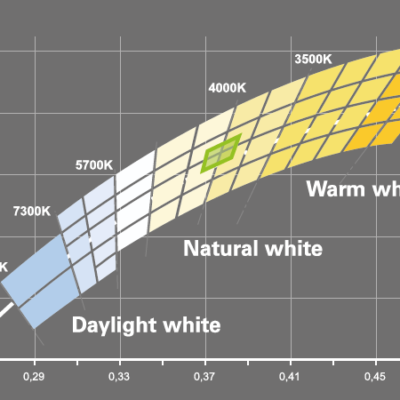November 21st, 2023
Effective thermal management is crucial for maintaining the performance, reliability, and lifespan of LED lighting systems. LEDs are sensitive to heat, and excessive temperatures can lead to reduced efficiency, color shifts, and premature failure. Several thermal management technologies are employed to address these challenges:
- Heat Sinks:
- Purpose: Heat sinks are passive cooling devices that dissipate heat away from the LED components.
- Design: Typically made of aluminum or other thermally conductive materials, heat sinks provide a large surface area to enhance heat dissipation. They are often integrated into the design of LED fixtures.
- Active Cooling Systems:
- Purpose: Active cooling systems, such as fans or liquid cooling, actively remove heat from the LED components.
- Design: Fans circulate air to cool the LED components, while liquid cooling systems use a coolant to absorb and transfer heat away from the LEDs. These systems are common in high-power or industrial LED applications.
- Phase Change Materials (PCMs):
- Purpose: PCMs absorb and release thermal energy during phase transitions, helping to regulate temperature.
- Design: PCMs are incorporated into the design of LED fixtures and absorb heat during operation. As the temperature rises, the PCM undergoes a phase change, storing heat. When the temperature decreases, the PCM releases the stored heat.
- Thermal Interface Materials (TIMs):
- Purpose: TIMs enhance the thermal conductivity between the LED components and heat sinks.
- Design: TIMs are inserted between the LED and the heat sink to fill gaps and imperfections, ensuring efficient heat transfer. Materials like thermal greases or pads are commonly used.
- Ceramic Substrates:
- Purpose: Ceramic substrates offer good thermal conductivity and electrical insulation.
- Design: LEDs mounted on ceramic substrates benefit from efficient heat dissipation, and the ceramic material provides electrical insulation. This is particularly important in high-power LED applications.
- Thermal Design of Fixtures:
- Purpose: The overall design of the LED fixture impacts its thermal performance.
- Design: Engineers design fixtures to optimize airflow, distribute heat evenly, and maximize the effectiveness of thermal management components. Well-designed fixtures enhance the overall thermal efficiency of LED systems.
- Smart Thermal Management Systems:
- Purpose: Smart systems use sensors and control algorithms to dynamically adjust cooling based on operating conditions.
- Design: Temperature sensors monitor the LED components, and the cooling system is adjusted in real-time to optimize thermal performance. This ensures efficient cooling without unnecessary energy consumption.
- Material Improvements:
- Purpose: Advancements in materials science contribute to the development of materials with better thermal properties.
- Design: Materials with high thermal conductivity and improved heat dissipation properties are continuously researched and incorporated into the design of LEDs and their associated components.
Effective thermal management is a multifaceted approach, often involving a combination of these technologies to ensure that LED lighting systems operate within the specified temperature range, maximizing performance and lifespan.



